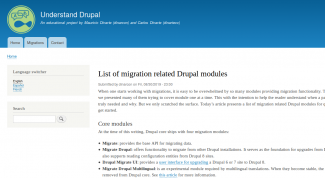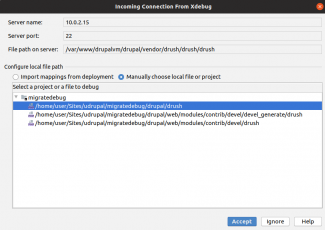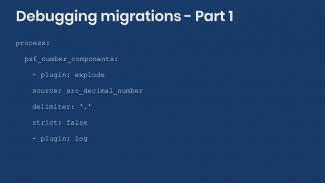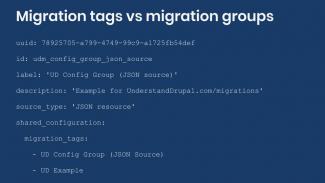
Make 2020 the Year You Begin the Upgrade to Drupal 8: Upcoming Trainings and Resources
Drupal 7 End of Life is November 2021, which means this is the year many should start upgrading to Drupal 8. We have five upcoming trainings and several free resources to help people upgrade.

Introduction to Drupal 8 upgrades
Although we covered a lot of ground, we only scratched the surface. To wrap up the series, we present an introduction to a very popular topic: Drupal upgrades. Note: In this article, when we talk about Drupal 7, the same applies for Drupal 6.

List of migration related Drupal modules
When one starts working with migrations, it is easy to be overwhelmed by so many modules providing migration functionality. Today’s article presents a list of migration related Drupal modules for quick reference.

How to configure XDebug, PHPStorm, and DrupalVM to debug Drupal migrations via Drush commands and the browser
In recent articles, we have presented some recommendations and tools to debug Drupal migrations. Using a proper debugger is definitely the best way to debug Drupal be it migrations or other substems.

How to debug Drupal migrations - Part 2
Today, we are going to show how to use the Migrate Devel module and the <code>debug</code> process plugin. Then we will give some guidelines on using a real debugger like XDebug. Next, we will share tips so you get used to migration errors.

How to debug Drupal migrations - Part 1
When working on Drupal migrations, it is often the case that things do not work right away. Today’s article is the first of a two part series on debugging Drupal migrations. We start giving some recommendations of things to do before diving deep into debugging.

Understanding the entity_lookup and entity_generate process plugins from Migrate Tools
A deep dive into two process plugins: `entity_lookup` and `entity_generate`.

Executing Drupal migrations from the user interface with Migrate Tools
A step by step look at the workflow for importing configuration entities and executing migrations from the user interface with Migrate Tools.

What is the difference between migration tags and migration groups in Drupal?
In the previous post we talked about migration groups provided by the Migrate Plus module. Today, we are going to compare them to migration tags. We will dive deeper into how they work and provide tips to avoid problems.

Using migration groups to share configuration among Drupal migrations
In the previous posts we talked about option to manage migrations as configuration entities and some of the benefits this brings. Today, we are going to learn another useful feature provided by the Migrate Plus module: migration groups.
Pagination
- Previous page
- Page 2
- Next page

